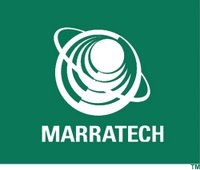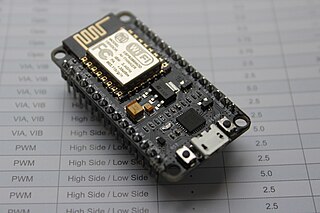The H323Plus project, formerly OpenH323, has as goal developing a full featured, open source (MPL) implementation of the H.323 Voice over IP protocol. The code is written in C++ and, through the development effort of numerous people around the world, fully supports the H.323 protocol. The software has been integrated into a number of open source and commercial software products.

Tandberg was an electronics manufacturer located in Oslo, Norway and New York City, United States. The company began in the radio field, but became more widely known for their reel-to-reel tape recorders as well as cassette decks and televisions. The original company went bankrupt in 1978, after a sharp financial downturn. The following year, the company re-formed whilst their data division was split off as Tandberg Data, including the tape recording division, which reduced its scope to data recording.
Nucleus RTOS is a real-time operating system (RTOS) produced by the Embedded Software Division of Mentor Graphics, a Siemens Business, supporting 32- and 64-bit embedded system platforms. The operating system (OS) is designed for real-time embedded systems for medical, industrial, consumer, aerospace, and Internet of things (IoT) uses. Nucleus was released first in 1993. The latest version is 3.x, and includes features such as power management, process model, 64-bit support, safety certification, and support for heterogeneous computing multi-core system on a chip (SOCs) processors.

Asterisk is a software implementation of a private branch exchange (PBX). In conjunction with suitable telephony hardware interfaces and network applications, Asterisk is used to establish and control telephone calls between telecommunication endpoints, such as customary telephone sets, destinations on the public switched telephone network (PSTN), and devices or services on voice over Internet Protocol (VoIP) networks. Its name comes from the asterisk (*) symbol for a signal used in dual-tone multi-frequency (DTMF) dialing.
The eDonkey Network is a decentralized, mostly server-based, peer-to-peer file sharing network created in 2000 by US developers Jed McCaleb and Sam Yagan that is best suited to share big files among users, and to provide long term availability of files. Like most sharing networks, it is decentralized, as there is no central hub for the network; also, files are not stored on a central server but are exchanged directly between users based on the peer-to-peer principle.
The next-generation network (NGN) is a body of key architectural changes in telecommunication core and access networks. The general idea behind the NGN is that one network transports all information and services by encapsulating these into IP packets, similar to those used on the Internet. NGNs are commonly built around the Internet Protocol, and therefore the term all IP is also sometimes used to describe the transformation of formerly telephone-centric networks toward NGN.

Videotelephony is the two-way or multipoint reception and transmission of audio and video signals by people in different locations for real-time communication. A videophone is a telephone with a video camera and video display, capable of simultaneous video and audio communication. Videoconferencing implies the use of this technology for a group or organizational meeting rather than for individuals, in a videoconference. Telepresence may refer either to a high-quality videotelephony system or to meetup technology, which can go beyond video into robotics. Videoconferencing has also been called visual collaboration and is a type of groupware.

Marratech was a Swedish company that made software for e-meetings. It was acquired by Google in 2007.

Ekiga is a VoIP and video conferencing application for GNOME and Microsoft Windows. It is distributed as free software under the terms of the GNU GPL-2.0-or-later. It was the default VoIP client in Ubuntu until October 2009, when it was replaced by Empathy. Ekiga supports both the SIP and H.323 protocols and is fully interoperable with any other SIP compliant application and with Microsoft NetMeeting. It supports many high-quality audio and video codecs.

H.323 is a recommendation from the ITU Telecommunication Standardization Sector (ITU-T) that defines the protocols to provide audio-visual communication sessions on any packet network. The H.323 standard addresses call signaling and control, multimedia transport and control, and bandwidth control for point-to-point and multi-point conferences.
Thrift is an interface definition language and binary communication protocol used for defining and creating services for numerous programming languages. It was developed at Facebook for "scalable cross-language services development" and as of 2020 is an open source project in the Apache Software Foundation.
In the field of VoIP networking, the Open Phone Abstraction Library (OPAL) continues the open-source openh323 project to support a wide range of commonly used protocols used to send voice, video and fax data over IP networks rather than being tied to the H.323 protocol. Initially, from 2007, OPAL supported the H.323 and Session Initiation Protocol (SIP) protocols, but it has grown to include Asterisk IAX2.
The OpenH323 project had as its goal the development of a full featured, open source (MPL) implementation of the H.323 Voice over IP protocol. The code was written in C++ and, through the development effort of numerous people around the world, supported a broad subset of the H.323 protocol. The software has since been integrated into a number of open source and commercial software products.

Open Cobalt is a free and open-source software platform for constructing, accessing, and sharing virtual worlds both on local area networks or across the Internet, with no need for centralized servers.

GNU Gatekeeper is a free software project that implements an H.323 Gatekeeper based on the OpenH323 or H323Plus stack. A gatekeeper provides address translation, admissions control, call routing, authorization and accounting services to an H.323 system defined on the H.323 standard by ITU-T.
RemObjects Software is an American software company founded in 2002 by Alessandro Federici and Marc Hoffman. It develops and offers tools and libraries for software developers on a variety of development platforms, including Embarcadero Delphi, Microsoft .NET, Mono, and Apple's Xcode.

Symbian is a discontinued mobile operating system (OS) and computing platform designed for smartphones. It was originally developed as a proprietary software OS for personal digital assistants in 1998 by the Symbian Ltd. consortium. Symbian OS is a descendant of Psion's EPOC, and was released exclusively on ARM processors, although an unreleased x86 port existed. Symbian was used by many major mobile phone brands, like Samsung, Motorola, Sony Ericsson, and above all by Nokia. It was also prevalent in Japan by brands including Fujitsu, Sharp and Mitsubishi. As a pioneer that established the smartphone industry, it was the most popular smartphone OS on a worldwide average until the end of 2010, at a time when smartphones were in limited use, when it was overtaken by iOS and Android. It was notably less popular in North America.

NodeMCU is a low-cost open source IoT platform. It initially included firmware which runs on the ESP8266 Wi-Fi SoC from Espressif Systems, and hardware which was based on the ESP-12 module. Later, support for the ESP32 32-bit MCU was added.